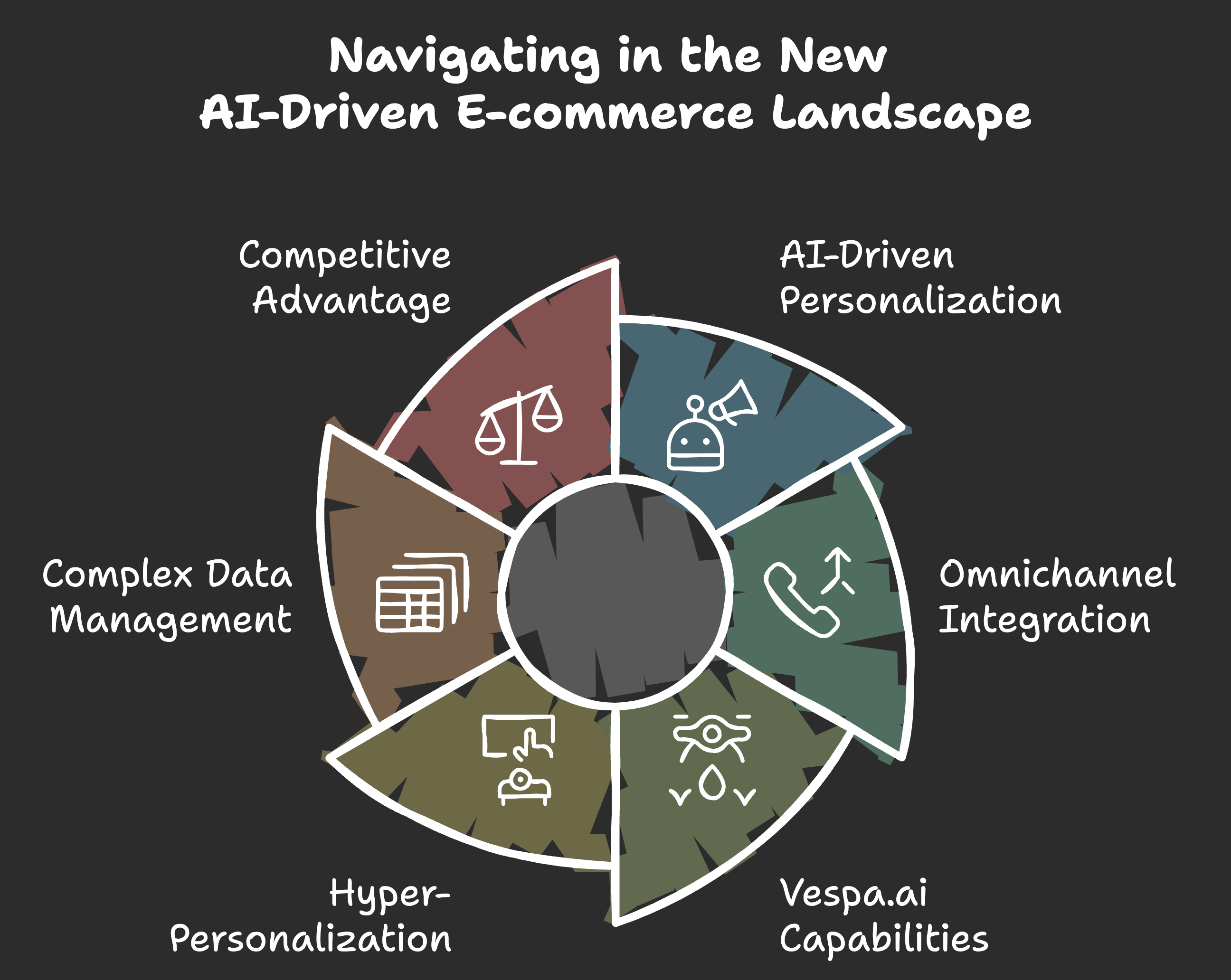Vespa.ai: The “Sleeping Giant” Powering Next-Gen Search and Recommendations

Aapo Tanskanen’s Observation
Aapo Tanskanen recently called Vespa.ai “a bit of a sleeping giant.” It’s a nicely fitting description. Long before vector databases were trendy, Vespa had already integrated them as part of its toolkit, quietly leading the way for today’s most advanced search and recommendation systems.
This inspired me to write about Vespa’s journey from its origins at Yahoo to its present-day innovations, exploring how it continues to set the bar for scalable, AI-driven technology and bring it to people’s attention.
From Yahoo to Vespa.ai: The Origin Story
Vespa’s story began within Yahoo, back when it was one of the most visited websites in the world. In 2004, Yahoo faced a unique challenge: how to power fast, reliable search and recommendation across billions of pieces of content.
Their solution is the platform which can serve many projects and provide necessary functionalities, an engine designed from the ground up for high-speed, large-scale, real-time indexing, and highly customizable and adapted to almost any application.
This allowed Yahoo to deliver tailored search results and serve ads to millions of users daily. The platform was named Vespa. Vespa quickly became the backbone for multiple Yahoo services, from personalized news feeds to local recommendations. By publishing it as open-source software in 2017, Yahoo allowed developers worldwide to use and improve Vespa, setting it up for long-term impact and adaptability.
Early Adoption of Vector Databases: A Forward-Thinking Move
One of Vespa’s standout features was its early adoption of vector and tensor operations. While vector search has become central to AI-driven applications today, Vespa was implementing it years before it gained industry-wide recognition, dating back to 2014.
This foresight allowed Vespa to optimize its search and recommendation engine for handling multi-dimensional data—a key capability for advanced recommendation systems. With extended vector capabilities beyond just search, Vespa could process user behaviors and preferences on a granular level, driving more relevant search results and highly personalized recommendations.
Technical Strengths: Powering Search and Recommendations for the Real World
At its core, Vespa is built to provide low-latency, real-time responses for high-traffic applications. This means that Vespa doesn’t just store data; it indexes and retrieves it at lightning speeds, even as data grows in scale. For companies needing fast, accurate results—whether in media, retail, or finance—Vespa’s architecture allows them to deliver real-time recommendations and search experiences that adapt on the fly. For instance, in e-commerce, Vespa powers recommendation systems that respond instantly to changes in user behavior, such as adding a new product to their cart or viewing a certain category. This capability allows businesses to craft deeply personalized user experiences, keeping engagement and satisfaction high.
New Horizons: Retrieval-Augmented Generation (RAG) and Tensor Advantages
In the latest phase of its evolution, Vespa has embraced technologies like Retrieval-Augmented Generation (RAG) and extended tensor processing. RAG has become a valuable approach in building knowledge-based applications, where it enables Vespa to act as a “retrieval engine” for generative AI applications.
Imagine an AI chatbot trained to handle complex customer service queries in real-time. By leveraging RAG, Vespa can quickly pull relevant information and context, helping the chatbot deliver meaningful, accurate responses on the spot. Similarly, tensor processing gives Vespa the capacity to handle cutting-edge models, such as late interaction models, making it easier for machine learning teams to integrate them directly into production environments at production scale without risk. This streamlines workflows, speeding up deployment and maintaining high performance, low latency, and lower costs, even for more compute-demanding model usage.
Guidance from the Top: Leadership with ColPali
Key to Vespa’s continued growth is a leadership team committed to innovation. Adopting and enabling usage of solutions like ColPali has provided essential direction, helping Vespa remain aligned with industry trends while pushing the boundaries of what’s possible in search technology.
With a focus on staying at the forefront of AI and data infrastructure, this leadership ensures that Vespa is a dynamic and evolving platform—ready for the demands of next-gen AI applications. From supporting GenAI to agentic AI systems, Vespa’s leaders understand the importance of preparing for what’s next in the world of digital search and recommendation.
Conclusion: Vespa’s Continued Role as a Leader in AI-Driven Search
In many ways, Vespa is both a pioneer and a platform built for the future. From its early days powering Yahoo to the latest advances in vector databases, RAG, and tensor technology, Vespa.ai continues to be an invaluable tool for those looking to build advanced, scalable search and recommendation systems. This commitment to innovation has attracted high-profile adopters, with companies like Farfetch, Vinted, Vinted recommender, Spotify, and OTTO relying on Vespa’s capabilities to deliver fast, personalized, and engaging user experiences.
As more organizations seek powerful solutions for search and AI-driven recommendations, Vespa’s “sleeping giant” reputation is likely to awaken, making it an essential tool for the AI-powered future.
In case you would like to learn more about Vespa.ai, feel free to contact me.
Jürgen Obermann jurgen@Vespa.ai
